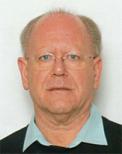- About us
- Research
- Students & Teaching
- Seminars & Events
- Directories
- Booking Rooms & Equipment
- עברית
Home » Prof. Aharon Oren was included in the 2023 Highly Cited Researchers list by Clarivate
Prof. Aharon Oren was included in the 2023 Highly Cited ResearchersTM list by ClarivateTM (https://clarivate.com/highly-cited-researchers/). Of the world’s population of scientists and social scientists, Highly Cited Researchers™ are 1 in 1,000. Each researcher selected has authored multiple Highly Cited Papers™ which rank in the top 1% by citations for their field(s) and publication year in the Web of Science over the past decade.
ClarivateTM has marked four of Prof. Oren’s papers as Highly Cited Papers™. Three are in the field of taxonomy and nomenclature of prokaryotes [1-3], and one deals with the physiology and biochemistry of microorganisms living at extremely high salt concentrations [4].
Nomenclature of prokaryotes (bacteria and archaea) is regulated by the International Code of Nomenclature of Prokaryotes (ICNP), of which Prof. Oren is the editor-in-chief [5]. The latest revision of the ICNP included the rank of phylum and the rules for naming them. Based on the newly approved rules, names of forty-two phyla of prokaryotes were validly published [1]. These include a number of phyla that were widely known by other names, e.g. Proteobacteria and Firmicutes, now named Pseudomonadota and Bacillota.
Journals that publish descriptions of new species of prokaryotes nowadays require determination of the genome sequence of the new organism. To ensure appropriate quality of the genome sequences deposited in databases, minimal standards for the quality of genome sequences were described with guidelines how they can be applied for taxonomic purposes [2].
The average nucleotide sequence identity between two genomes is often used for prokaryotic species delineation. However, the contribution of the genome sequence to prokaryotic genus delimitation has been less studied. The percentage of conserved proteins was found to serve as a robust genomic index for establishing the genus boundary for prokaryotic groups [3].
Most of Prof. Oren’s earlier studies dealt with the ecology and physiology of microorganisms inhabiting hypersaline environments. One strategy used by halophilic and halotolerant microorganisms to cope with the low water activity of their environment is to accumulate potassium chloride and other salts, and to adapt the intracellular machinery to function in the presence of high salt concentrations. Many halophilic archaea and a few bacteria use this option. A more widespread option is the synthesis and/or accumulation of organic osmotic solutes. To obtain an integrative picture of the adaptations to life at high salt concentrations in the microbial world, we compared the strategies used by a number of model organisms: Halobacterium salinarum (Archaea) and Salinibacter ruber (Bacteria) that accumulate KCl, Halomonas elongata as a representative of the Bacteria that synthesize organic osmotic solutes, and eukaryotic microorganisms including the unicellular green alga Dunaliella salina, the black yeast Hortaea werneckii and the basidiomycetous Wallemia ichthyophaga, which use glycerol and other compatible solutes [4].
[1] Oren A, Garrity GM. Valid publication of the names of forty- two phyla of prokaryotes. International Journal of Systematic and Evolutionary Microbiology 2021;71:005056. doi: 10.1099/ijsem.0.005056.
[2] Chun J, Oren A, Ventosa A, Christensen H, Arahal DR, da Costa MS, Rooney AP, Yi H, Xu X-W; De Meyer S, Trujillo ME. Proposed minimal standards for the use of genome data for the taxonomy of prokaryotes. International Journal of Systematic and Evolutionary Microbiology 2018;68:461-466. doi: 10.1099/ijsem.0.002516.
[3] Qin Q-L, Xie B-B, Zhang X-Y, Chen X-L, Zhou B-C, Zhou J-Z, Oren A, Zhang Y-Z. A proposed genus boundary for the prokaryotes based on genomic insights. Journal of Bacteriology 2014;196:2210-2215. doi: 10.1128/JB.01688-14.
[4] Gunde-Cimerman N, Plemenitaş A, Oren A. Strategies of adaptation of microorganisms of the three domains of life to high salt concentrations. FEMS Microbiology Reviews 2018;42:353-375.doi: 10.1093/femsre/fuy009.
[5] Oren A, Arahal DR, Göker M, Moore ERB, Rosselló-Móra R, Sutcliffe IC. International Code of Nomenclature of Prokaryotes. Prokaryotic Code (2022 Revision). International Journal of Systematic and Evolutionary Microbiology 2023;73:005585. doi: 10.1099/ijsem.0.005585.
